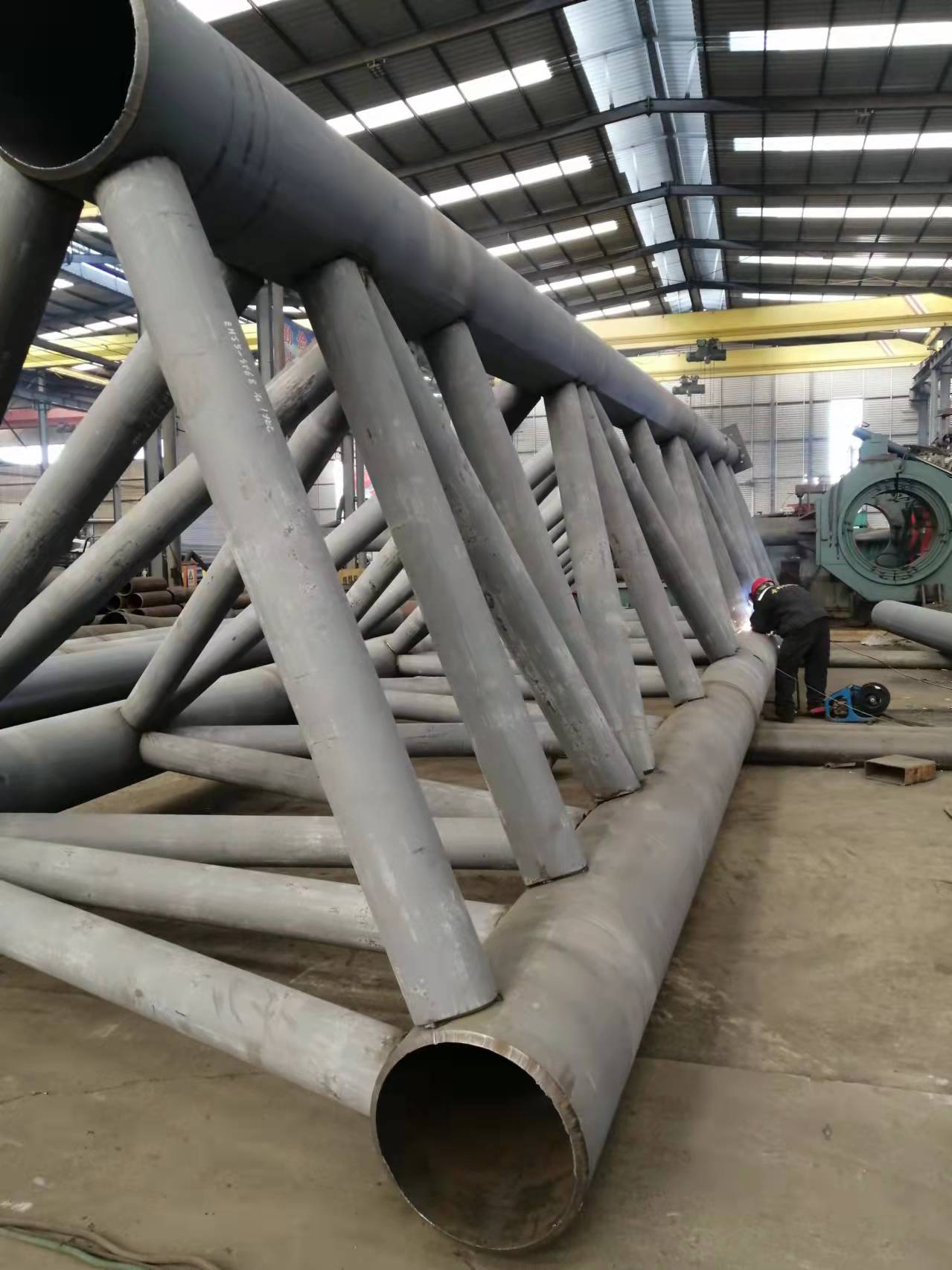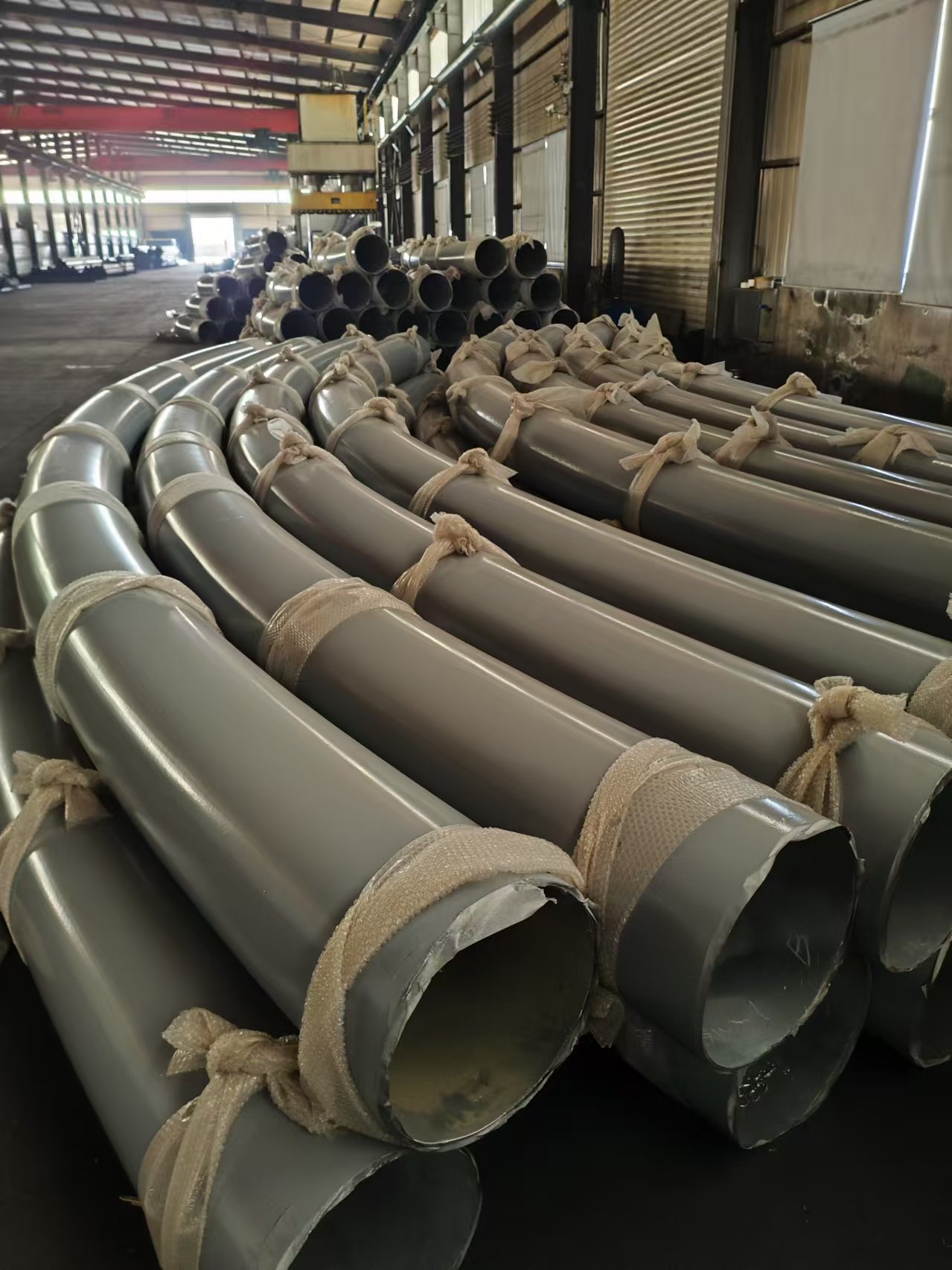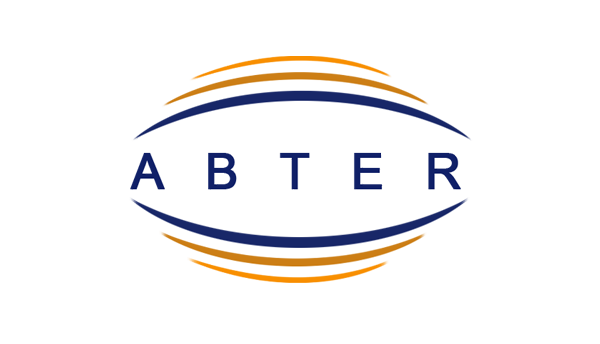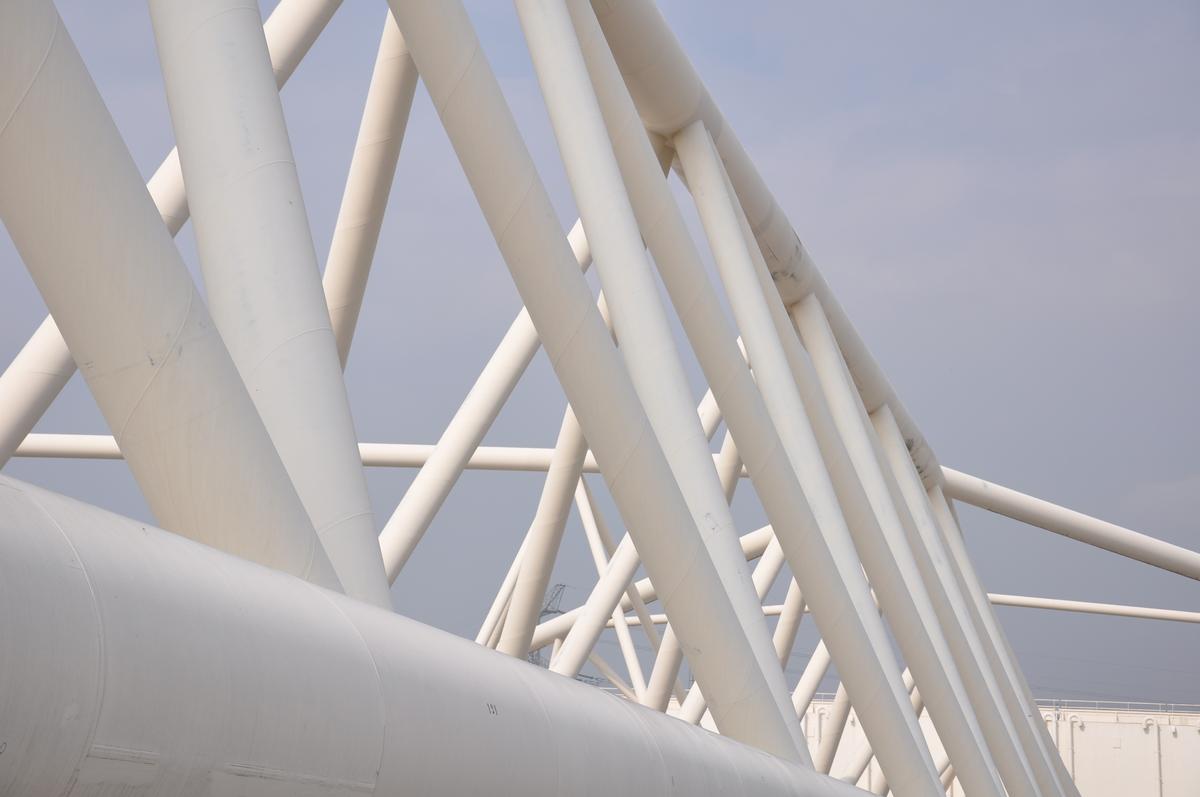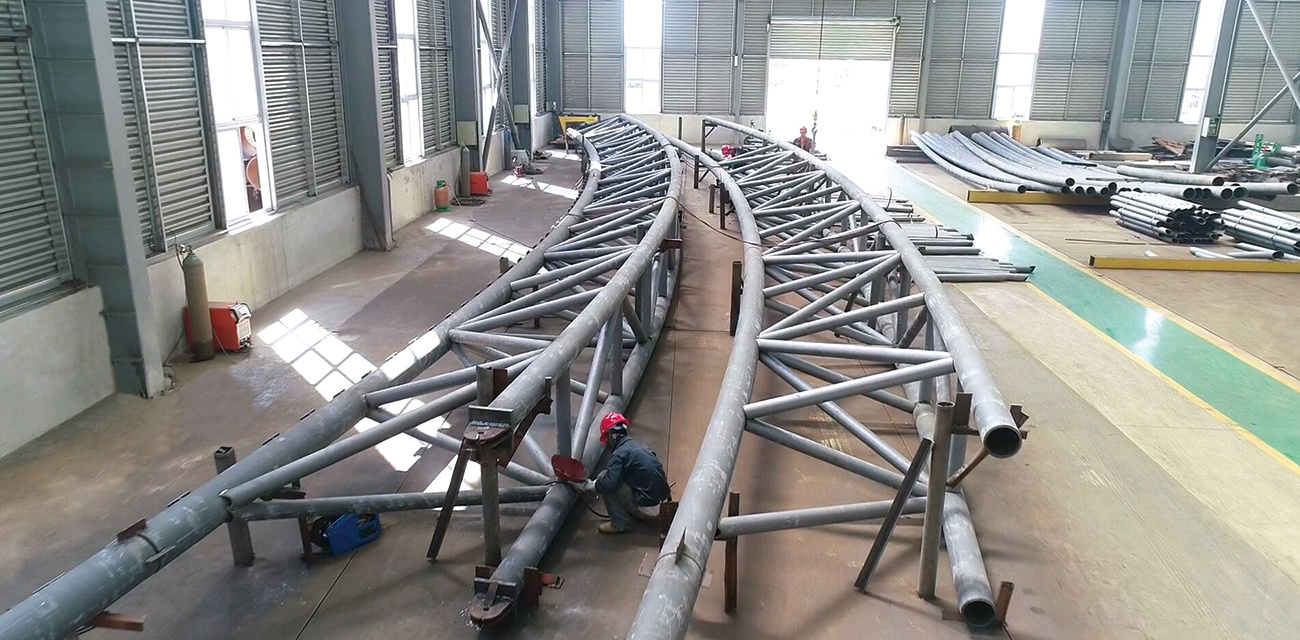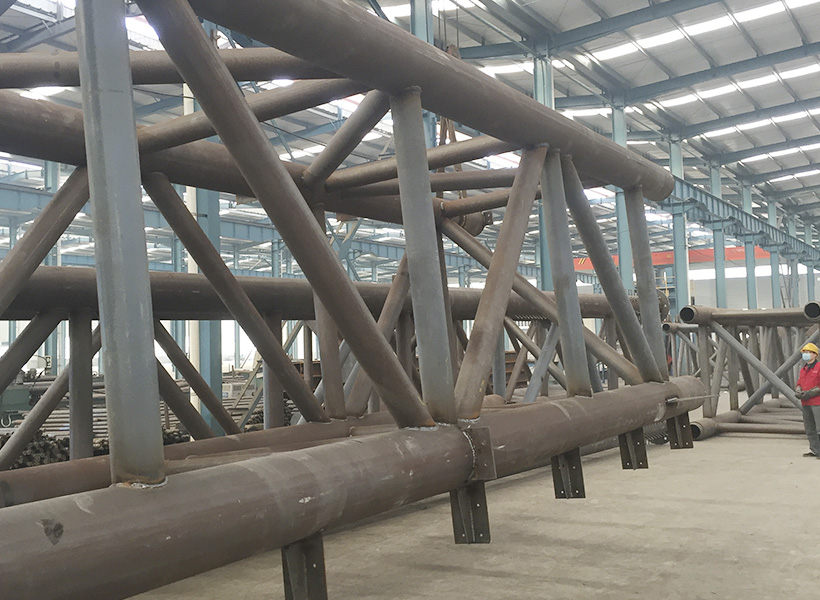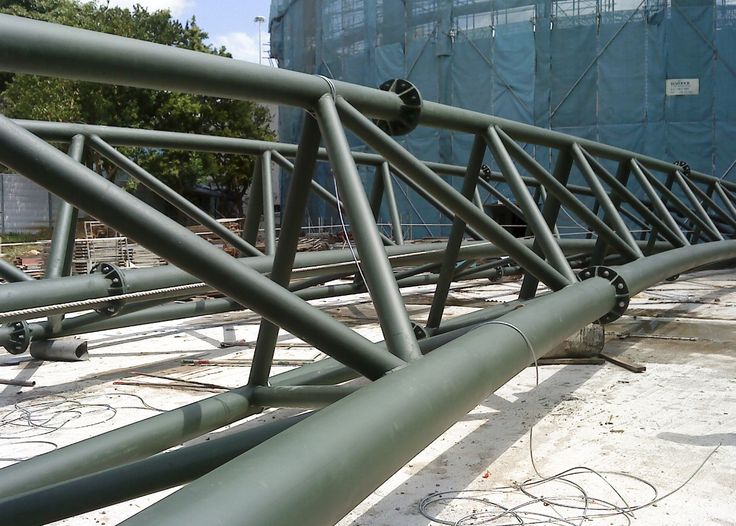Стальная рубашка: Комплексный анализ
Введение в фермы на крыше стальной трубы
Стальная рубашка на крыше, особенно для длинных структур, требующих больших, Без столбцы пространства. Эти фермы используют трубчатые стальные срезы, Часто согнут или изогнут, Для формирования триангулированных рамок, которые обеспечивают исключительные соотношения прочности и веса, Эстетическая гибкость, и структурная эффективность.
Длинная сталь структуры, обычно превышает 20 метры, используются в таких приложениях, как терминалы аэропорта, спортивные арены, выставочные залы, и промышленные объекты. Использование изгиба
трубчатые фермы Увеличивает как функциональные, так и архитектурные аспекты этих структур, обеспечение сложной геометрии и эффективного распределения нагрузки. Этот анализ углубляется в инженерные параметры, Соображения производства, и сравнения производительности стального изгиба
Труба крыша фермы, Поддерживается данными и техническими идеями.
Изгиб трубы фермы отличаются их использованием бесшовных или сварных стальных труб, которые наклоняются в конкретные формы, чтобы сформировать аккорды и членов веб -сайта. Процесс изгиба вводит уникальные механические свойства, такие как повышенная устойчивость к изгиб и улучшение эстетической привлекательности, по сравнению с традиционными прямыми секциями.
Первичный Используемые материалы включают высокопрочные углеродные сталики, такие как Q355B или ASTM A500, которые предлагают превосходные растягивающие и сжатые свойства. Конструкция этих ферм должен учитывать такие факторы, как условия нагрузки, длина пролета, совместная детализация, и экологические влияния, Все это имеет решающее значение для обеспечения структурной целостности и безопасности.
Инженерные параметры и конструктивные соображения
Дизайн фермы на крыше стальной изгибы включают в себя подробное понимание структурной механики, свойства материала, и загружать взаимодействия. Ключевые инженерные параметры включают соотношение пролета и глубины, Диаметр трубы и толщина стенки, изгибающий радиус, и типы соединений. Соотношение пролета к глубине обычно варьируется от 10 к 25, С более низкими соотношениями, что приводит к более глубоким фермам, которые уменьшают аккордовые силы, но увеличивают длину веб -членов. Для длинных пролетов (20–100 метров), Соотношение 15–20 часто является оптимальным, чтобы сбалансировать использование материала и структурную эффективность. Диаметры труб варьируются от 100 мм до 400 мм, с толщиной стен 6–16 мм, в зависимости от требований нагрузки и пролета.
Процесс изгиба вводит остаточные стрессы, которые необходимо тщательно управлять. В соответствии с отраслевыми стандартами, Отклонение в округленности труб не должно превышать ± 0,75%, и степень изгиба должна быть ограничена 3.0 мм/м, чтобы обеспечить точность размеров. Сварные суставы, обычно используется в трубных фермах изгиба, должен соответствовать стандартам, таким как BS en 1993-1-8, которые указывают требования к прочности сварки и жесткости сустава. Например, При сварке труб с неравной толщиной, наклон кожи ≤1:2.5 рекомендуется минимизировать концентрации стресса. Кроме того, Пожарная сопротивление является критическим соображением, С фермами, предназначенными для соответствия такими стандартами, как NFPA 5000, Часто требуя защитных покрытий или разведенных красок для достижения указанных рейтингов пожара.
Методы производства и изготовления
Производство фермы на крыше изгиба включает в себя передовые процессы для достижения точной геометрии и структурной надежности. Бесшовные стальные трубы, предпочтительнее их единообразие, обычно согнуты с использованием методов горячего или холодного индукционного изгиба. Горячий изгиб, выполняется при температуре около 850–950 ° C, допускает более жесткие радиусы, но может изменить микроструктуру материала, Требует термообработки после изгиба для восстановления силы. Холодное изгиб, Подходит для меньших радиусов, сохраняет свойства материала, но требует более высоких усилий, увеличение стоимости оборудования. Выбор способа гибки зависит от диаметра трубы., толщина стен, и желаемая кривизна.
Задачи изготовления включают поддержание точности размеров и обеспечение высококачественных сварных швов.. Автоматизированные станки параболической резки часто используются для достижения точных торцевых разрезов пересекающихся узлов., снижение потребности в косынках и экономия материала. Например, Исследование ферменной системы с пролетом 36 метров показало, что расход стали составляет примерно 63 кг/м², значительно ниже, чем у традиционных конструкций открытого сечения. Соединения обычно сварные или болтовые., со сварными пересекающимися узлами, обеспечивающими более чистый внешний вид, но требующими строгого контроля качества для предотвращения дефектов. Использование полусферических узлов для древовидных опор колонн., Как видно в таких проектах, как Международный конференц -центр Гуанчжоу, повышает гибкость сустава и уменьшает горизонтальную тягу.
Сравнение производительности: Изгиб труба против. Обычные фермы
Изгиб труба фермы предлагают отчетливые преимущества по сравнению с обычными фермами, изготовленными из угловых секций, I-beams, или полые структурные секции (HSS). Сравнительный анализ показывает, что трубчатые срезы, в том числе изгиб трубы, Уменьшите самообеспечение на 15–40% по сравнению с углами для пролетов 20–50 метров. Это объясняется равномерным распределением материала вокруг нейтральной оси, который повышает сжатие и изгибные способности. Для 35-метровой панели Howe Furss, Использование круглых полых секций (CHS) привел к 15.2% Снижение веса по сравнению с угловыми срезами, с квадратными половными секциями (СВС) и прямоугольные полой секции (правая шкала) достижение до 26.2% сбережения.
|
|
|
|
Квадратная половая секция (СВС)
|
|
|
|
|
|
|
|
|
|
|
Прочность на сжатие (МПа)
|
|
|
|
|
|
|
|
|
|
|
|
|
|
Рейтинг сопротивления пожарной охране (кадровый)
|
|
|
|
Приведенная выше таблица иллюстрирует превосходную производительность ферм изгиба трубки с точки зрения веса и контроля отклонения. Однако, Затраты на изготовление трубных ферм могут быть на 10–20% выше из -за специализированных процессов изгиба и сварки. Несмотря на это, Общая экономия затрат от уменьшенного использования материала и упрощенной эрекции часто перевешивает начальные расходы, особенно для превышающих пролетов 30 метры.
Структурное поведение в условиях нагрузки
Конструктивное поведение фермы на крыше изгиба в различных условиях нагрузки - Dead, жить, ветер, и сейсмический - проводят строгий анализ. Численное моделирование, как проводится для 54-метровой фермы, показывает, что максимальное вертикальное смещение происходит в середине простира, Обычно около 31–33 мм при вертикальных нагрузках, хорошо в рамках инженерного предела 1/300 пролета. Анализ напряжений показывает, что максимальные напряжения остаются ниже прочности урожая Q355B Стали (355 МПа), обеспечение безопасности во время строительства и эксплуатации. Для сейсмических нагрузок, Вертикальный компонент движения земли может значительно повлиять на длинные фермы, особенно в зонах, находящихся. Параметрическое исследование с использованием программного обеспечения SAP2000, идентифицированного осевой силы, Вертикальное смещение, и базовый изгибающий момент в качестве критических параметров при вертикальном движении земли.
Ветровые нагрузки, рассчитывается на ASCE 7-16, еще один критический фактор. Для фермы с расстоянием 3,33 метра, Давление ветра на компонентах и облицовке может достигать 1,2–1,5 кПа, Требует надежных систем крепления. Изгиб трубы фермы, с их высокой жесткостью и радиусом большого раздела вращения, Установите превосходное сопротивление боковым изгибам, Сделать их идеальными для открытых конструкций, таких как терминалы аэропорта. Однако, Термическое расширение и сокращение должно быть решено, Поскольку стальные трубы подвержены напряжениям, вызванным температурой, Потенциально вызывает отклонений 1–2 мм/м в экстремальном климате.
Тематические исследования и практические применения
Практическое применение фермы на крыше изгиба видно в ориентирах. Гуанчжоу Международный конференц-центр использовал систему фермы стальной трубы с 36-метровым пролетом, поддерживается колоннами в форме дерева, достижение отклонения 60 мм (1/383 пролета) и потребление стали 63 кг/м². Сходным образом, Велодром Laoshan для Олимпийских игр в Пекине Использовал фермы космической трубки, демонстрируя их способность соответствовать эстетическим и функциональным требованиям. Эти проекты подчеркивают универсальность трубных ферм изгиба в приспособлении сложных архитектурных форм при сохранении структурной целостности.
Сравнительно, Обычные фермы в аналогичных приложениях часто требуют дополнительных или более тяжелых разделов, Увеличение затрат на материалы на 10–20%. Использование изгиб труб позволяет обеспечить бесшовную интеграцию механических и электрических систем через сеть ферментов, сокращение потребности во вторичном кадрировании. Однако, Такие проблемы, как недостатки сварного шва и необходимость точного разреза.
Заключение и будущие направления
Стальная труба на крыше, предлагая баланс силы, экономика, и эстетическая привлекательность. Их способность уменьшать самообеспечение, Приспосабливайте сложную геометрию, и сопротивляться разнообразным нагрузкам делает их предпочтительным выбором для современной конструкции. Будущие достижения в производстве, такие как автоматическое изгиб и лазерная сварка, Обещание еще больше повысить их экономичную эффективность и точность. Однако, Необходимы текущие исследования для оптимизации процессов изгиба, минимизировать остаточные напряжения, и разработать стандартизированные рекомендации по проектированию для различных условий пролета и загрузки. Интегрируя передовые инструменты моделирования, такие как структуры SAP2000 и Tekla, Инженеры могут продолжать раздвигать границы длинных стальных конструкций, Обеспечение безопасности и устойчивости в архитектурных инновациях.
Выбор материалов для фермы на крыше стальной нагрузки имеет решающее значение для их производительности в длинных конструкциях. Высокопрочные стали с низким рассеиванием, такие как Q355b (предел текучести 355 МПа) или ASTM A500 Grade C, обычно используются из -за их превосходных растягивающих и сжатых свойств, а также их сварка. Эти стали обеспечивают благоприятное соотношение силы к весу, что важно для минимизации использования материалов в превышающих пролетах 20 метры. Например, 40-метровая пролетная ферма с использованием труб Q355B диаметром 219 мм и толщина стенки 8 ММ может достичь снижения веса приблизительно 20% по сравнению с эквивалентными фермами I-лучей. Однако, Выбор материала также должен учитывать коррозионную стойкость, особенно для структур, подвергшихся воздействию суровых средств, такие как прибрежные арены или промышленные объекты. Могут быть использованы оцинкованные или из нержавеющей стали трубы, хотя они увеличивают затраты на 15–25%.
Оптимизация использования материала включает анализ конечных элементов (ВЭД) Чтобы определить минимальные размеры труб, которые удовлетворяют требованиям нагрузки при соблюдении пределов отклонения (Обычно простирается/300). Например, 50-метровая ферма, подвергнутая живой нагрузке 1.0 кн/м² и ветровая нагрузка 1.2 KPA требует труб с минимальным соотношением диаметра и толщины (D/T.) из 20–30, чтобы предотвратить местное изгиб. Использование высокопрочных болтов (оценка 10.9) или сварные швы с полным провенированием обеспечивают надежные соединения, но они должны быть разработаны для обработки динамических нагрузок, например, из вибраций, вызванных толпой на стадионах,, который может достигать частот 1,5–3,0 Гц.
Точность изготовления и контроль качества
Изготовление фермы изгиба труб требует высокой точности для обеспечения конструкционной целостности и эстетического качества. Индукционное изгиб, будь то горячие или холодные, является основным методом формирования труб. Горячая индукция изгиб, проводится при 850–950 ° C., Позволяет радиусы на 1,5D (где d диаметр трубы), но это может снизить уровень урожайности на 5–10% из -за микроструктурных изменений. Холодное изгиб, выполняется при температуре окружающей среды, сохраняет свойства материала, но ограничивается радиусами 3D или более, требует специализированного оборудования с превышающими возможностями 500 кН. После сбивающих инспекций, например, ультразвуковой контроль, имеют решающее значение для обнаружения микросвеков или овальности, с приемлемыми допусками, определенными стандартами, такими как en 10219 (овальность ≤2%).
Сварка является критическим аспектом изготовления, особенно для пересекающихся узлов, где сходятся несколько труб. Использование автоматизированных сварочных систем, такие как роботизированная сварка MIG или TIG, улучшает последовательность и уменьшает дефекты. Тематическое исследование 60-метровой фермы показало, что автоматизированная сварка снижает недостатки сварного шва 30% по сравнению с ручными методами, снижение риска усталости при циклической нагрузке. Меры контроля качества, в том числе неразрушающее тестирование (неразрушающий контроль) как рентгенографическая или магнитная проверка частиц, Обеспечить соблюдение стандартов, таких как AWS D1.1. Эти процессы добавляют 10–15% к затратам на изготовление, но имеют важное значение для долгосрочной долговечности.
Распределение нагрузки и структурная динамика
Конструктивное поведение фермы на крыше изгиба в сложных условиях нагрузки является ключевым соображением. Длинные фермы должны противостоять комбинации мертвых нагрузок (самообеспечение, кровель, и системы MEP), живые нагрузки (занятость или снег), ветровые нагрузки, и сейсмические силы. Для 45-метровой фермы с конфигурацией Pratt, Моделирование конечных элементов с использованием программного обеспечения, такого как ANSYS или SAP2000, указывает на то, что максимальные напряжения происходят на перекрестках аккорда-пакета, обычно 200–250 МПа при комбинированной загрузке. Использование круглых полых секций (CHS) В изгиб трубы фермы усиливают жесткость кручения, Снижение риска изгиба с боковой протяженностью по сравнению с открытыми секциями, такими как i-beams.
Динамический анализ имеет решающее значение для таких структур, как спортивные арены, где вызванные толпой вибрации или вызванные ветром колебания могут повлиять на производительность. Например, 70-метровая пролетная ферма в велодроме испытывала естественную частоту 2.1 Гц, близко к частоте вызванных человеком нагрузок (1.5–2,5 Гц), требуя заморожения для смягчения резонанса. Сейсмический дизайн, на коды, такие как IBC 2021, требует рассмотрения вертикального движения земли, который может усилить осевые силы в веб -членах до 40%. Изгиб трубы фермы, с их едиными перекрестными сечениями, Распределить эти силы более эффективно, чем угольные фермы, Снижение концентраций стресса на 15–20%.
Сравнительный анализ: Изгибать трубные фермы против. Альтернативные системы
Для дальнейшего выяснения преимуществ изгиба трубных ферм, Подробное сравнение с альтернативными системами, такими как космические рамы и кабельные крыши, оправдано.
Космические рамки, часто используется для превышающих пролетов 50 метры, Распределить нагрузки по трехмерной сетке, Предлагая высокую избыточность, но требуя на 20–30% больше стали, чем изгиб трубы для эквивалентных пролетов. Кабельные крыши, пока легкий, Полагайтесь на кабели высокого напряжения, которые увеличивают затраты на техническое обслуживание и менее подходят для сложной геометрии. Изгиб трубные фермы поражают баланс, Предлагая гибкость в дизайне и уменьшенное использование материала.
|
|
|
|
|
|
|
|
|
|
Использование стали (кг/м²)
|
|
|
|
Время строительства (месяцы)
|
|
|
|
Стоимость технического обслуживания
|
|
|
|
|
|
|
|
|
Сейсмическая производительность
|
|
|
|
Эта таблица подчеркивает эффективность ферм изгиба с точки зрения использования материалов и скорости строительства, Хотя космические рамы могут быть предпочтительны для сверхпрочных пролетов (>100 m) Из -за их избыточности. Кабельные системы, пока легкий, требуется частые кабельные натяжения, Увеличение затрат на жизненный цикл на 10–20%.
Соображения окружающей среды и устойчивости
Устойчивость вызывает растущую обеспокоенность в области структурной инженерии, и изгиба трубные фермы предлагают несколько преимуществ. Их снижение потребления стали понижает воплощенный углерод, с 50-метровым пролетом фермы, излучающей примерно на 10–15% меньше Co₂ во время производства по сравнению с угловыми фермами. Потенциал утилизации - еще одно преимущество, как стальные трубы 100% пригодный для вторичной переработки, согласовывание с принципами круговой экономики. Однако, энергоемкий процесс изгиба, Особенно горячее изгиб, может увеличить углеродный след на 5–10%, если не приводится к питанию от возобновляемых источников энергии.
Повысить устойчивость, Инженеры могут принять модульные конструкции, допуская сборную и уменьшенную сварку на месте. Модульная система пусковой сети на 30 метров, например, Сокращено время эрекции 25% и отходы за 15% по сравнению с традиционными методами. Кроме того, Использование низкоуглеродных покрытий, такие как на водных цепочках красок, может повысить пожарную стойкость при минимизации воздействия на окружающую среду. Будущие инновации, такие как интеграция переработанной стали или передовых композитов, может дополнительно уменьшить экологический след изгибных ферм.
Проблемы и стратегии смягчения последствий
Несмотря на их преимущества, изгибать трубные фермы сталкиваются с проблемами, в том числе высокие начальные затраты, Чувствительность к производственным дефектам, и тепловые эффекты. Стоимость специализированного изгибного оборудования и квалифицированного труда может увеличить бюджеты проекта на 10–20%, особенно для небольших проектов. Чтобы смягчить это, Стандартизированные размеры труб и радиусы изгиба могут быть приняты для оптимизации производства. Несовершенство сварного шва, который может снизить усталостную жизнь 30%, Требовать строгих протоколов НДТ и обеспечения качества.
Тепловое расширение, особенно в регионах с перепадами температур 40°C и более., может вызывать напряжения в фермах с фиксированными концами. Компенсаторы или скользящие опоры, рассчитан на перемещения на 5–10 мм., может смягчить эту проблему. Кроме того, защита от коррозии имеет решающее значение для наружных конструкций, с горячим цинкованием, обеспечивающим срок службы 50+ лет в умеренной среде, по сравнению с 20–30 годами для органических покрытий.
Будущие тенденции и инновации
Будущее кровельных ферм из изогнутых труб – за интеграцией цифровых технологий и передовых материалов.. Информационное моделирование зданий (БИМ) обеспечивает точную координацию между проектированием, изготовление, и эрекция, сокращение ошибок до 20%. Использование машинного обучения в FEA может оптимизировать конфигурации ферм., прогнозирование режимов отказов с помощью 95% точность. Кроме того, использование высокопрочных сталей, таких как Q460 (предел текучести 460 МПа) could further reduce material usage by 10–15%, though their higher cost requires careful economic analysis.
Emerging fabrication techniques, such as 3D-printed steel nodes or laser-guided bending, promise to enhance precision and reduce waste. Например, a pilot project in Shanghai used 3D-printed nodes for a 25-meter span truss, сокращение времени изготовления 30%. These innovations, combined with sustainable practices, position bend pipe trusses as a cornerstone of modern long-span structural engineering.
